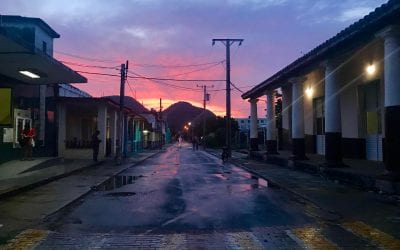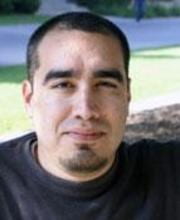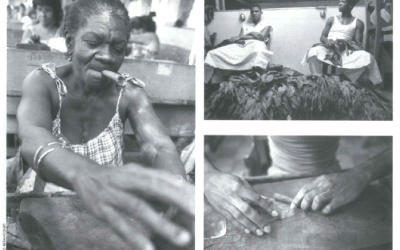Housing, Historic Preservation, and Community
A Design Workshop
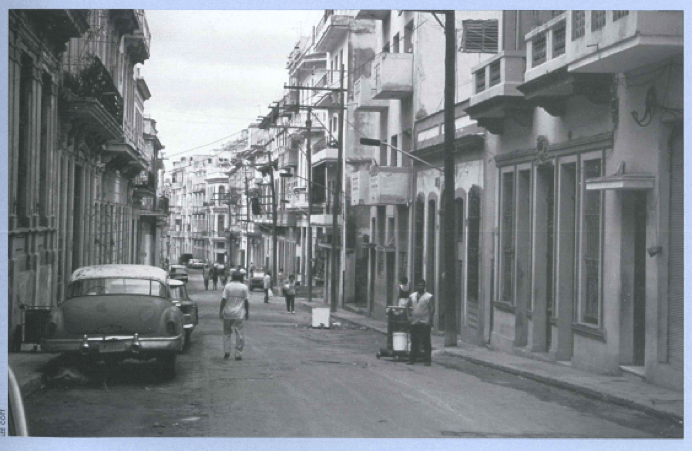
A street in Havana
Back in 1977, Massachusetts Lt. Governor Thomas P. O’Neill III and a group of business people, including myself, went to Cuba to explore the possibility of future business there, which seemed imminent at the time. As a 1966-68 Peace Corps volunteer in rural Colombia, I was the only American fluent (or relatively fluent) in Spanish. That gave me a certain advantage, for when our group met one evening with Fidel Castro, I ended up chatting with him one-on-one about animal husbandry, cigars, and architecture.
After a while, El Commandante-unable to contain his curiosity-put his hand on my shoulder and asked me, “Where did you learn your Spanish?” I told him, and he chuckled, explaining, “You speak like a peasant.” He had set the tone, so I put my hand on his shoulder, “Do you mind if I ask you where I can get those Cohiba cigars everyone was talking about?” He gave me one out of his own pocket! We kept chatting for a while and after learning I was an architect, he suggested that I might like to return to Cuba to help out with Havana’s reconstruction.
Two days later, a plainclothesman showed up with a box of Cohibas with Fidel Castro’s personal calling card taped to its lid. In the light of this unusual person-to-person encounter, perhaps it’s fitting that my current design studio project at the Harvard Graduate School of Design involves Cuba, with a heavy dose of person-to-person contact with Cuban architects and community leaders.
The design studio project, entitled Housing, Historic Preservation, and Community Development, is exploring design strategies for combining the preservation of existing urban fabric and architecture in Havana with the need for an expanded supply of well-designed housing. Havana as a whole is crumbling; its infrastructure is nearly dysfunctional, and its very fabric is in an advanced state of decay. As one could imagine, a drastic shortage of housing exists throughout the city. Small apartment buildings, originally constructed to house four families, are now home to as many as 20.
I spent five days in Havana last June with Mario Coyula, director of the Center for the Integral Development of Havana, the group with which we will be most closely working on the studio project. At Mario’s suggestion, we agreed upon the studio site as La Fragua Martiana, an important area of transition between central Havana and the district known as Vedado. This district begins at a large waterfront park on the Malecón promenade and extends to the interior blocks around the University of Havana. It includes elegant, fairly well kept up buildings and those that are crumbling, overused space and vacant lots. Throughout is a rich- mixture of Caribbean architectural styles along with some fine examples of modern design. As in all of Havana, there is a need for good, low-rise, high-density housing, as well as the challenge of how to efficiently design underutilized lots and preserve crumbling interiors.
During this past month, the studio has intensively studied Cuba and its history, as well as its architectural, planning, and urban design heritage. We researched the 1955 unexecuted Pilot Plan for Havana by Harvard Graduate School of Design former Dean José LuÃs Sert and the current preservation plan for the same district. We examined the new challenges to Cuba with the development of its economy as a tourist mecca. The dollar is now acceptable currency, accompanied by the seemingly inevitable shopping malls, tourist restaurants, and hotels. With this new rush toward economic development, the Castro government runs the risk of selling off key pieces of real estate to the highest bidder.
After studying these old and new Havana challenges, we will now travel (February 17-21) for an intensive three-day site reconnaissance, public agency meetings, and personal introductions. Learning will become person-to-person exchange. We will sketch, discuss, visit, live, eat, drink, and sleep Havana during those days, and come back prepared to have those experiences inform possible urban design solutions. By the end of the semester, we intend to continue our work to include urban design guidelines as well as design proposals for individual sites. We will return to Havana during Spring Break to present our work to our Cuban counterparts and hopefully with high government officials.
This is not the first Cuba studio taught at the Graduate School of Design. A team of architects who were visiting critics led a studio to Cuba five years ago. This studio is different in its emphasis on community development and housing along with the close coordination with Cubans. The studio is being taught in collaboration with the Cuban architectural community and the Center for the Integral Development of Havana. GSD students will work side-by-side with their Cuban counterparts during our trips to Havana. We will make presentations of our work to the community and to the Cuban government and publish the results of our findings.
And since this studio course is a sponsored one- like many GSD studio courses-we hope that some of the donors can accompany us on our trips. Throughout the studio course, we will also be holding evening seminars on Cuba that will be open to the University community, a way of extending our own person-to-person contact.
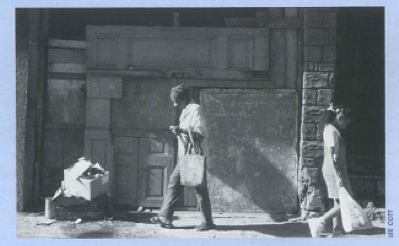
The Graduate School of Design has a long relationship with Cuba, back to the days of José LuÃs Sert. Boston has another relationship as a kindred waterfront city that I would like to see thought of as a sister-city collaboration. After all, the two cities-once linked by the sugar trade-are two very old cities with a rich historic fabric and the pressure of developers who wish to drastically alter the cityscape. There are some who say that Boston will crack under this pressure, as Havana shows signs of doing. So there are some things we can learn-and teach-from our unique Boston perspective.
I believe that design studios – can make a difference in the “real world.” I’ve taught them in the Chicago inner city, Denver, Boston, and Texas, among other venues. In Chicago, I’ve seen the South Side neighborhood use many of our recommended guidelines about design aesthetics and planning. So, after this studio in Havana, we intend to return in the Fall semester for a Waterfront Studio in order to continue the Graduate School of Design’s commitment to Havana.
Winter 2000
Lee Cott, a design critic in Urban Planning and Design, teaches advanced design studio options at the Harvard Graduate School of Design. Cott is president and founding principal of Bruner/Cott é Associates, a Cambridge architecture firm, whose designs for affordable housing and other large-scale com- unity development-related rehabilitation, adaptive reuse, and preservation projects have received local and national awards. He is a Fellow of the ATA and former president of the Boston Society of Architects.
Related Articles
Isabelle DeSisto: Student Perspective
encountered the first obstacle of my trip to the Isla de la Juventud before I even left Havana. Since American credit cards don’t work in Cuba, I couldn’t buy my plane tickets online. But that…
Honoring Humanity: An “Interview” with Richard Mora
Mauricio Barragán Barajas: Why don’t we begin by having you introduce yourself? RM: Alright. I was born in East Los Angeles, and grew up in Cypress Park, a barrio in…
Tobacco and Sugar
“Tobacco and Sugar” is the course that focuses American literatures on the Caribbean, and that acknowledges the unavoidable importance of monocultures for cultural studies. Much of the…

